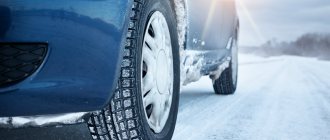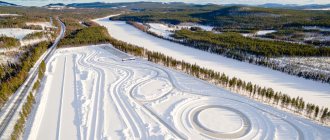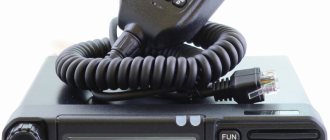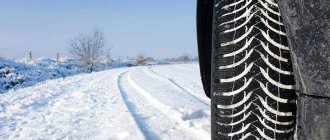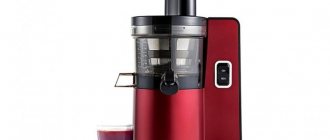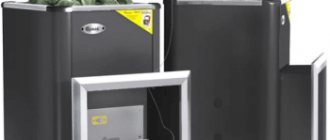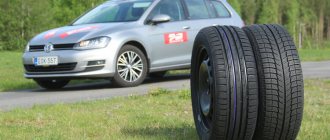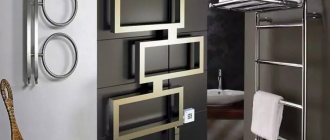Rating 2021 of the best winter studded tires for SUVs and crossovers (SUVs) according to reviews from motorists: summary technical characteristics of tires, standard sizes with prices for them in online stores in your city
| Photo | Name | Rating |
| Triangle winter tires | ||
| Triangle PS01 | Average price: 4209 rub. | |
| Triangle TR757 | Average price: 4306 rub. | |
| Kormoran winter tires | ||
| Kormoran SUV STUD | Average price: 6750 rub. | |
| Bridgestone winter tires | ||
| Bridgestone Blizzak SPIKE-02 SUV | Average price: 11510 rub. | |
| Firestone Ice Cruiser 7 | Average price: 4271 rub. | |
| Winter tires Yokohama | ||
| Yokohama Ice Guard IG65 | Average price: 10330 rub. | |
| Michelin winter tires | ||
| Michelin X-Ice North 4 | Average price: 14450 rub. | |
| Winter tires Continental | ||
| Continental IceContact 2 | Average price: RUB 12,472. | |
| Nokian winter tires | ||
| Nokian NORDMAN 7 SUV | Average price: 8240 rub. | |
| Nokian HAKKAPELIITTA 8 SUV | Average price: RUB 11,684. | |
| Nokian HAKKAPELIITTA 9 SUV | Average price: 14,250 rub. | |
| Winter tires Viatti | ||
| Viatti Bosco Nordico V-523 | Average price: 5576 rub. | |
| Tigar winter tires | ||
| Tigar ICE | Average price: 4910 rub. | |
| Tigar SUV ICE | Average price: 6840 rub. | |
| Nexen winter tires | ||
| Nexen Winguard WinSpike WH62 | Average price: 6060 rub. | |
Triangle winter tires
Triangle PS01
121 reviews
- Speed index:
R (up to 170 km/h) / T (up to 190 km/h) - Spikes:
yes - Diameter:
15 / 16 / 17 - Profile width:
185 / 195 / 205 / 215 / 225 / 235 - Profile height:
45 / 55 / 60 / 65 / 70 - Rating:
4.76
Advantages:
- low price
- quality
- balances normally
- soft
- controllability
Flaws:
- the stud is unstable
- the spikes quickly became unusable
Triangle TR757
111 reviews
- Speed index:
Q (up to 160 km/h) / T (up to 190 km/h) - Spikes:
yes - Diameter:
14 / 15 / 16 / 17 / 18 - Profile width:
175 / 185 / 195 / 205 / 215 / 225 / 235 - Profile height:
45 / 55 / 60 / 65 - Rating:
4.87
Advantages:
- low noise
- decent braking
- road grip
- soft
- the price is adequate
Flaws:
- tanned
- balancing
Characteristics of good winter tires
The choice of tires for SUVs is wide. It is necessary not only to select a manufacturer, but also to understand what properties jeep tires should have.
There are several subspecies:
- European, providing effective grip on slippery asphalt. They have a diagonal pattern with a large number of drainage grooves, massive lugs and thin slits in the form of lamellas.
- Scandinavian. They are best used on snowy roads. The tread pattern is diamond-shaped and deep.
- Studded. Used on icy roads. Shorten the braking distance, reducing the likelihood of skidding. Driving on dry surfaces is contraindicated: due to the reduction in contact area, the tire slides on the asphalt. The likelihood of an accident due to wheel jams increases.
The tread pattern can be symmetrical or asymmetrical. The first tires are cheaper, but less efficient and noisier. The latter cope well with water and wet snow. They are almost inaudible in the cabin.
Tires designed for winter differ from summer and all-season tires in their rubber composition. They can be operated in a wide temperature range; remain elastic at temperatures below -30 degrees and do not lose density during a thaw. The main component of this mixture is silicon dioxide. In the developments of some manufacturers there are also other components. Porous materials are introduced that work like a sponge: they absorb water and immediately push it out. Abrasive or moisture-absorbing elements are used as additives.
The frame must be resistant to cold and sudden temperature changes. In addition, one of its important functions is protection from foreign objects that are not visible to the driver due to snow.
Kormoran winter tires
Kormoran SUV STUD
42 reviews
- Speed index:
T (up to 190 km/h) - Spikes:
yes - Diameter:
16 / 17 / 18 - Profile width:
215 / 225 / 235 - Profile height:
55 / 60 / 65 - Rating:
4.79
Advantages:
- price
- Controllability
- Holds the road well
- tread pattern
- softness
Flaws:
- noisy
Rating of studded winter tires for crossovers
A good way to ensure traction on ice is to install the best studded winter tires designed for crossovers. In such conditions, only studs can guarantee a safe ride.
Nokian Tires Nordman C 185/75 R16 104/102R studded
pros
- easy to balance
- handling on any surface
- low noise
Minuses
- poor stud fastening
- increased fuel consumption
From 5820 ₽
Soft but wear-resistant rubber from the rating of winter studded tires in terms of quality and reliability. Excellent cross-country ability on icy and snowy roads. In snowy porridge it behaves predictably. The noise is moderate due to the elasticity of the tread. Fuel consumption increases by approximately 1 liter per 100 km. There is a loss of thorns, which can reach 50% for the next season. Good choice at a reasonable price.
Pirelli Ice Zero 2 205/55 R16 94T studded
pros
- controllability
- wear resistance
- reliability of tenon fastening
Minuses
- loud noise
- at temperatures above +10º C decrease in controllability
From 5598 ₽
Soft and comfortable rubber. Handles well on snowy roads, ice, and wet asphalt. The spikes are reliable - during the second season there were isolated falls. The noise level when driving on asphalt is high. Lovers of driving outside the city in cold weather will like it.
Kormoran SUV Stud 235/65 R17 108T studded
pros
- V-shaped tread pattern
- frame with steel cord
- no hydroplaning or sliding in slush
Minuses
- noise on the asphalt
From 5569 ₽
The tread and studs provide controllability on frozen asphalt and slushy snow. During emergency braking, they prevent skidding. The model is reliable - metal cord is used in manufacturing. At the beginning of operation they are loud, but after 400 km of running-in the noise decreases significantly. In terms of cost, quality, and reliability, this is the best studded winter tire for a crossover presented in this review.
Bridgestone winter tires
Bridgestone Blizzak SPIKE-02 SUV
89 reviews
- Speed index:
T (up to 190 km/h) - Spikes:
yes - Diameter:
15 / 16 / 17 / 18 / 19 / 20 / 21 - Profile width:
205 / 215 / 225 / 235 / 245 / 255 / 265 / 275 / 285 - Profile height:
40 / 45 / 50 / 55 / 60 / 65 / 70 - Rating:
4.68
Advantages:
- controllability
- quality
- reliability
- keep the road
- no problem on ice
Flaws:
- No
Firestone Ice Cruiser 7
81 reviews
- Speed index:
T (up to 190 km/h) - Spikes:
yes - Diameter:
13 / 14 / 15 / 16 / 17 - Profile width:
175 / 185 / 195 / 205 / 215 / 225 / 235 - Profile height:
55 / 60 / 65 / 70 - Rating:
4.56
Advantages:
- goes on any surface
- low price
- brakes great
- strength
Flaws:
- a bit harsh
- Accelerates on ice so-so
- There is no protective edge for the disc
Winter tires Yokohama
Yokohama Ice Guard IG65
145 reviews
- Speed index:
T (up to 190 km/h) - Spikes:
yes - Diameter:
16 / 17 / 18 - Profile width:
205 / 215 / 225 / 235 / 245 / 255 / 265 / 285 - Profile height:
40 / 45 / 50 / 55 / 60 / 65 - Rating:
4.65
Advantages:
- comfortable
- low noise
- wear-resistant
- price
Flaws:
- It floats a little when turning
Show prices
Michelin winter tires
Michelin X-Ice North 4
305 reviews
- Speed index:
H (up to 210 km/h) / T (up to 190 km/h) - Spikes:
yes - Diameter:
15 / 16 / 17 / 18 / 19 - Profile width:
185 / 195 / 205 / 215 / 225 / 235 / 245 / 255 / 265 - Profile height:
40 / 45 / 50 / 55 / 60 / 65 - Rating:
4.64
Advantages:
- controllability
- noisiness
- road control
- efficiency
- clutch
- balancing
- price
Flaws:
- No
Show prices
Which tires to choose for the winter? Review of new products and hits
Which tires to choose for the winter? Drom.ru understands the rich assortment of the upcoming season.
Tire selection service on Drom.ru
Eternal choice
It is possible that today someone has to choose, say, between a fur coat for their wife (husband) or a brand new set of winter tires. The fur coat will definitely wait, because tires are more important - safety and driving comfort. But as soon as you start thinking about this topic, another dilemma inevitably arises: should you buy tires with or without spikes?
Ice is the most treacherous and dangerous road surface, so winter tires are primarily required to have grip on slippery areas. For a long time, people have tried to solve this problem not only by using a special tread shape, but also by “forging” it with sharp metal objects called “spikes” (with the English designation Spike). It seemed that this was the best that could happen in the harsh Russian realities. But over time, caring foreigners introduced new technologies - an alternative appeared in the form of studless tires with a tread made of especially soft rubber with different fillers and many sipes. Colloquially “Velcro”, “friction” or “Scandinavian”. In any case, we are talking about winter tires for northern regions with a lot of snow and large temperature changes.
It even seemed that the era of studs was over, especially against the backdrop of their ban in Japan and central Europe, but the tire business did not close the studs, but continued to “hone” them, because the sales market for them was still large. The breakthrough occurred in 2013 - with the tightening of requirements in the European Union for such tires regarding their effect on asphalt. After which the spikes become smaller and lighter, but their number increases, and in general, in terms of the form of execution, there is now a real “battle” of technology and design between them.
Modern spikes become a work of art in their own way. At the same time, they have to solve three main problems - increasing grip on ice, minimizing the impact on asphalt and increasing acoustic comfort.
Therefore, spikes are still relevant; on ice, they are still safer and more reliable, especially in thaws. It is also necessary to take into account the by no means proportional relationship between speed and braking distance. Let's say, if at 25 km/h on ice the distance to a stop is 15 meters, then at a speed of 50 km/h under the same conditions it will not even be 30 meters, but 40 or more. But most importantly, the difference in deceleration looks completely different depending on the models and types of tires. If at 25 km/h, relatively speaking, this is one and a half to two meters or more, then at 50 km/h it is already 10 and more! Here's the price of the issue.
However, winters are different now, residents of large cities may not “notice” anything, so in many cases friction tires seem to be the best choice. They do not make the “iron on asphalt” sound, but remain elastic in the cold and are also not afraid of ice in such conditions. True, their specific “meaty” tread does not throw out slush very effectively and “rows” poorly in loose snow, unlike many studs with their more aggressive directional tread pattern. And yet, “friction shoes” are to a certain extent more universal: they allow you to “expand” the season of use - put them on earlier and take them off later. Although it is still not recommended to use them in summer, besides, the soft tread “floats” on clean asphalt and “burns out” faster. At the same time, studs have their own diseases associated with the loss of “studs” and violations in stud technology.
The advantage of “friction clutches” is greater versatility. But on clear ice they still lose to the “spikes”.
And yet, based on an array of information about modern tires and operating features, the following can be said. If you often have to get out of the city, drive in areas with difficult terrain and climate, then studded shoes (good ones!) will still be preferable. It is also useful to recommend them to both inexperienced and active drivers. Actually, the review of tire models was also compiled based on the general market conditions in Russia, with a priority on characteristics on ice and snow, but without the goal of giving a full range with all budget tires.
Studded tires are better suited for clear icy conditions. If the car is mainly used in large cities (with an abundance of reagents on the roads), the choice is clear - studless tires.
To understand the difference in cost, we present several common sizes (mostly not the most expensive) from the passenger car range. There will be something for SUVs as well, although this has long been a parallel range of tires. Prices are indicative from the lower level from online stores, taking into account the beginning of October (prices change during the season). In the list of standard sizes, we will “save” on the popular 195/65 R15. In terms of cost, these tires, as a rule, are close to another popular size - 185/65 R15 (standard for Lada Vesta, Kia Rio and others). Tire brands are listed in alphabetical order.
New items for the 2019/2020 season
The choice of tires, although a seasonal thing, is not a one-time thing - last year’s debutants also have not lost their status as newcomers, and their relevance will remain for several years. And yet about the Russian market just in the period 2019/2020.
Continental Ice Contact 3
The expected “troika” came out not with an asymmetrical, as before, but with a more traditional - directional tread pattern. In the latest reports from domestic test fields, the German new product turns out to be the winner. Of course, various innovations have been announced for the tire, especially regarding studs - not only are there a lot of them, but they also have a rubber body, which reduces the load on the asphalt and increases comfort. True, there is discrimination: “rubber-coated” studs are reserved for owners of wheels with a landing diameter of 17 inches or more.
Standard sizes: 14–19”, 31 options in total
- 185/65 R15 - from 4070 rubles
- 205/55 R16 - from 5860 rubles
- 215/65 R16 - from 6120 rubles
- 225/50 R17 - from 10,350 rubles
- 235/45 R18 - from 15,600 rubles
Cordiant Snow Cross 2
Formally, the second generation of “Snow Cross” appeared last year, but for technological reasons - only in some sizes. This season the tire will be in a more complete range. The new Russian-developed model now has an original directional tread pattern, an improved rubber composition and Finnish-made studs with hexagonal cores, although their number remains standard. In any case, the new Crosses should not let you down on ice and deep snow.
Standard sizes: 13–18”, 36 options in total
- 175/65 R14 - from 2360 rubles
- 185/65 R15 - from 2800 rubles
- 195/65 R15 - from 2610 rubles
- 205/55 R16 - from 3780 rubles
- 225/65 R17 - from 5500 rubles
Dunlop SP Winter Ice 03
Will “zero three” help rehabilitate the “faded” SP Winter Ice series? Quite, because the tire has been completely transformed: it not only has a different, more “ornate” tread pattern for better slush removal, but also progressive studs with V-shaped cores. There are one and a half times more studs, and their design with truncated core edges is designed to reduce the load on the asphalt and reduce noise. That is, you can expect greater grip on winter roads and increased comfort from the tire; moreover, it has a wide range of sizes (including a separate series for SUVs) and competitive prices.
Standard sizes: 14–20”, 25 options in total
- 175/65 R14 - from 2900 rubles
- 185/65 R15 - from 3350 rubles
- 205/55 R16 - from 4850 rubles
- 215/55 R17 - from 7650 rubles
- 235/50 R18 - from 9350 rubles
Pirelli Ice Zero 2
The Italians seemed to have succumbed to rumors about global warming, since nothing radically changed in the studded segment since 2013. And now the heir has changed in all respects: a different tread pattern (but still directional), an improved compound and, of course, a different “cut” - modernized studs with an increased number of them. Moreover, a reduction in noise levels is also claimed. The premium status of the new product is emphasized by the size range - starting from 16 inches, and the large availability of Run-Flat versions (technology that allows you to get there in the event of a loss of pressure). At the same time, a line for SUVs was released - Pirelli Scorpion Ice Zero 2.
Standard sizes: 16–20”, 31 options in total
- 205/55 R16 - from 5050 rubles
- 225/50 R18 - from 10,930 rubles
- 225/40 R18 - from 9920 rubles
- 245/45 R18 - from 11,250 rubles
Toyo Observe GSi-6 (HP)
A new edition of the friction model from Japanese Toyo Tires - with a modified directional tread pattern and improved ingredients in its composition. Tests confirm that the model’s performance on ice and asphalt has improved compared to its predecessor. Another important clarification: in the fall of 2021, the “six” will go on sale on the Russian market in the top HP version (with a speed index of up to 240 km/h), in a size range with a seat diameter of 16 inches, while the more affordable passenger series Basic (like the LS series for SUVs) will come later.
Standard sizes: 16–19”, 31 options in total
205/55 R16 - from 4700 rubles 215/55 R16 - from 5260 rubles 215/55 R17 - from 7120 rubles 225/45 R17 - from 7165 rubles 235/45 R18 - from 9770 rubles
Tire pool
Now let’s turn to the rest of the proposal, but still with the condition that these tires are not only well-known by many, but also managed to take part in various tests, and some of them have already had many years of “break-in” in Russian realities.
Bridgestone Blizzak Ice
A studless model in the Blizzak series with an asymmetric tread pattern debuted on the Russian market last year, but is officially positioned as a new product for the coming season. In its annotations, the manufacturer especially emphasizes reducing braking distances on ice, increasing wear resistance and reducing noise, compared with the previous Blizzak VRX model. In principle, the new Ice has already managed to demonstrate its “ice” accent in tests and in real conditions, but the prices, as consumers complain, are not “ice” at all.
Standard sizes: 13–19”, 60 options in total
- 175/65 R14 - from 3850 rubles
- 185/65 R15 - from 4190 rubles
- 205/55 R16 - from 6300 rubles
- 215/65 R16 - from 6350 rubles
- 215/55 R17 - from 10,320 rubles
Drom.ru verdict: confident braking on ice for “friction clutches”, comfort. But there are suspicions that the price is too high.
Bridgestone Blizzak Spike-02
It is curious that the Bridgets decided to return the veteran Ice Cruiser 7000 to the market (now with the prefix S in the designation), possibly as an “anti-crisis” measure. And yet, in the studded category for the Russian market, the main one is Blizzak Spike-02 (with a separate line for SUVs). The model was released in 2021, with the usual number of studs, but thanks to their powerful rectangular cores, braking on ice is effective. Also, these tires have good cross-country ability.
Standard sizes: 13–20”, 43 options in total
- 175/65 R14 - from 2950 rubles
- 185/65 R15 - from 3350 rubles
- 205/55 R16 - from 4560 rubles
- 215/55 R17 - from 7800 rubles
- 245/45 R18 - from 10,200 rubles
Drom.ru verdict: good braking on ice, durable sidewall and stud fit. Uncomfortable.
Continental Viking Contact 7
How not to note the German friction novelty with an interesting “diamond” tread? It is not surprising that the model has already been tested and approved in many winter tests. Although the “seven” has its drawbacks, for example, not the best cross-country ability, for a friction “northern” tire in general everything is “good”. Including the size range - one of the market records! Perhaps the biggest drawback for Russian motorists will be the prices.
Standard sizes: 14–21”, 110 options in total
- 175/65 R14 - from 4240 rubles
- 185/65 R15 - from 4660 rubles
- 205/55 R16 - from 6580 rubles
- 215/65 R16 - from 6670 rubles
- 215/55 R17 - from 9730 rubles
Drom.ru verdict: good grip properties for “friction clutches” on slippery surfaces, comfortable. Finnish Test World 2021 winners
Dunlop Winter Maxx WM-02
The common phrase “typical Japanese Velcro” is exactly right in this case - Dunlop studless tires at one time became one of the main players in the Russian market, “hungry” for winter tires. The next model from Sumitomo was released in 2021, as you might guess - with improved properties on slippery surfaces. In addition, the Japanese “friction clutch”, even in the tests of European adherents, turned out to be one of the most “passable” among its competitors. And the prices are not the highest.
Standard sizes: 13–19”, 40 options in total
- 175/65 R14 - from 2770 rubles
- 185/65 R15 - from 3100 rubles
- 205/55 R16 - from 5040 rubles
- 215/65 R16 - from 4850 rubles
- 215/55 R17 - from 7250 rubles
Drom.ru verdict: sufficient grip for “friction clutches” on winter surfaces and cross-country ability. Not the most comfortable.
Formula Ice
The studded model from Pirelli’s budget line was first announced back in 2013 and has since been holding its own as a relatively inexpensive winter tire on the Russian market. The studs are standard in design and quantity; no special “anti-slip” records were noted for the model, but as a way to ensure normal operation of the car in winter, taking into account city priorities, it is a completely reasonable investment.
Standard sizes: 13–18”, 36 options in total
- 175/65 R14 - from 2350 rubles
- 185/65 R15 - from 2970 rubles
- 205/55 R16 - from 3950 rubles
- 215/65 R16 - from 3820 rubles
- 215/55 R17 - from 6150 rubles
Drom.ru verdict: average level of grip, cross-country ability and comfort, prone to losing studs, but the price is low.
Goodyear Ultra Grip Ice Arctic
Last year, the company expanded its line of studded tires with the Ultra Grip 600 model, whose tread pattern is borrowed from the Dunlop Ice Touch (introduced in 2012 as part of partnership agreements). And yet, mainly, it has proven itself not only for its “ice” qualities, but also due to its confident cross-country ability. The tires may not be so versatile, not so comfortable, but they have become a hit with us precisely for their excellent adaptability to harsh winter conditions, and at reasonable prices among other famous foreigners.
Standard sizes: 14–19”, 40 options in total
- 175/65 R14 - from 3230 rubles
- 185/65 R15 - from 3640 rubles
- 205/55 R16 - from 4980 rubles
- 215/65 R16 - from 5130 rubles
- 215/55 R17 - from 7370 rubles
Drom.ru verdict: reliable grip on winter surfaces, high cross-country ability, but not very comfortable.
Gislaved Nord Frost 200
Reincarnation of the “first” Continental Ice Contact with a standard number of spikes. At different periods in tests, the Nord Frost 200 did not have outstanding performance on ice and “stayed” closer to urban operating conditions. And yet, in general, the “200” is rated as a good and balanced winter tire. In addition, today it is available in a very wide range of sizes and is relatively inexpensive.
Standard sizes: 13–20”, 74 options in total
- 175/65 R14 - from 2600 rubles
- 185/65 R15 - from 3250 rubles
- 205/55 R16 - from 4600 rubles
- 215/55 R17 - from 7070 rubles
- 225/65 R17 - from 6500 rubles
Drom.ru verdict: traction properties are average, good maneuverability, comfortable. Rapid loss of spines is possible.
Hankook Winter I*Cept iZ2
In the second generation of their friction model, South Korean tire makers moved away from the “Asian” type of tread with a symmetrical pattern to a “European” directional one. And in general, the modernization was beneficial - in four years, these tires managed to outperform their predecessor not only in advertising, but also in real life - they have confident grip on snow and ice! At the same time, prices have not become insolent and everything is in order with the size range.
Standard sizes: 13–19”, 50 options in total
- 175/65 R14 - from 2500 rubles
- 185/65 R15 - from 3000 rubles
- 205/55 R16 - from 4200 rubles
- 215/55 R17 - from 6700 rubles
- 225/45 R18 - from 8540 rubles
Drom.ru verdict: good braking properties for a friction clutch on ice. Comfortable, not very expensive.
Michelin X-Ice North 4
The fourth edition of this model is bristling with studs at a record level - for example, in the popular size 205/55 R16 there are 250 of them - this is more than twice the standard number of studs. And the studs themselves are special, “rally”: as the manufacturer claims, they are based on the design used in WRC tires. Judging by the results of comparative tests and responses from motorists, the new technologies work as they should: the tires are not only good on ice, but also balanced in other respects, which is usually noted in the products of this brand.
Standard sizes: 15–20”, 58 options in total
- 185/65 R15 - from 3770 rubles
- 205/55 R16 - from 5350 rubles
- 215/55 R17 - from 8280 rubles
- 215/60 R17 - from 9150 rubles
- 235/45 R18 - from 11,890 rubles
Drom.ru verdict: tenacious on ice, reliable in handling, not the noisiest with so many studs, winners in the Finnish Test World 2021.
Nokian Hakkapeliitta 9
In 2013, the era of “multi-studded” tires began, where the Finns actively moved with their sensational (including literally) “eight”. The follower with the index “9” in 2021 improved the design, in particular, by trying on a hybrid kit of studs - with different directions for the central and lateral tread areas. Since then, competitors have managed to catch up and even move the “nine” from some positions, but still the model remains in the top (including in price) tires for harsh winter conditions.
Standard sizes: 14–20”, 57 options in total
- 175/65 R14 - from 4250 rubles
- 185/65 R15 - from 4750 rubles
- 205/55 R16 - from 6600 rubles
- 215/55 R17 - from 11,000 rubles
- 225/45 R18 - from 13,400 rubles
Drom.ru verdict: tenacity and reliable handling on winter surfaces, but rapid loss of studs is possible. Highest prices.
Nordman 7
Since 2021, the line of studded tires of the Nordman brand has been dominated by the “seven” (a reincarnation of the Nokian HKPL 7 that came off the assembly line), which in terms of cost is more in the middle segment than in the budget segment. There is a separate line for SUVs. On ice, in various tests, the tire behaved differently - good and not so good, but at least the cross-country ability was okay. By the way, the previous “remix” of the original Nokia stud – Nordman with index 5 – remains in service. Yes, the tire may be inferior in some ways, but it is more affordable - prices are 8–12% (depending on the size version) lower than “ seven."
Standard sizes: 13–17”, 31 options in total
- 175/65 R14 - from 2830 rubles
- 185/65 R15 - from 3350 rubles
- 205/55 R16 - from 4580 rubles
- 225/60 R16 - from 6400 rubles
- 215/55 R17 - from 7790 rubles
Drom.ru verdict: good grip on winter surfaces and maneuverability, average level of comfort, but not very durable sidewall.
Nordman RS2
A cheaper reissue of the Finnish RS friction clutch occurred in 2015, since then the tires have been “pulling” (and very successfully) the segment of domestic “Velcro” in the middle price class. In addition, there is a separate line for SUVs. On winter surfaces (ice, snow), these tires justify themselves, and claims to mediocre “asphalt” properties should be accepted as a natural disadvantage for many studless Scandinavian-type tires.
Standard sizes: 13–17”, 26 options in total
- 175/65 R14 - from 2470 rubles
- 185/65 R15 - from 2900 rubles
- 205/55 R16 - from 4510 rubles
- 215/55 R17 - from 6200 rubles
- 225/60 R17 - from 6800 rubles
Drom.ru verdict: grip on winter surfaces and cross-country ability are sufficient for a studless tire, average level of comfort.
Nexen Winguard Ice Plus
The previous “Velcro” from the South Korean Nexen Tire, having a conventional symmetrical tread pattern, performed well on ice (at least in terms of braking/acceleration) and in terms of comfort, which rarely happens for the segment of inexpensive winter tires from “southern” countries. The upgraded version with a “plus”, released last year, has a directional tread pattern and, one can expect, improved properties on winter surfaces.
Standard sizes: 13–19”, 40 options in total
- 175/65 R14 - from 2270 rubles
- 185/65 R15 - from 2730 rubles
- 205/55 R16 - from 3750 rubles
- 215/55 R17 - from 5360 rubles
- 225/45 R18 - from 7800 rubles
Drom.ru verdict: among budget “friction clutches” there is good grip on ice and comfort, but there were complaints about the weak sidewall.
Pirelli Winter Ice Zero FR
As one famous Russian humorist said, “Italians are similar to us in many ways...”, including implying that they are somewhat “cunning.” So with the Pirelli Winter Ice Zero FR friction tires, which entered the market back in 2015, not everything is so “transparent”. Either they are, you know, winners in tests, or they are banal averages. And yet, we will note this model, since in general it has performed well in Russia, and the prices are lower than other famous “Europeans”.
Standard sizes: 14–19”, 31 options in total
- 175/65 R14 - from 3040 rubles
- 185/65 R15 - from 3315 rubles
- 205/55 R16 - from 5100 rubles
- 215/65 R16 - from 4960 rubles
- 215/55 R17 - from 8150 rubles
Drom.ru's verdict: grip on ice and snow sufficient for a "friction" and cross-country ability.
Sava Eskimo Stud
These studded tires are a simplified version of the Goodyear Ultra Grip Extreme (Sava is a subsidiary of this company). If we analyze all the data, the verdict is this: honest winter tires in terms of price-quality ratio, but with a “bias” for urban use, since the standard number and design of studs are not able to compete with advanced winter models.
Standard sizes: 14–17”, 19 options in total
- 175/65 R14 - from 2520 rubles
- 185/65 R15 - from 2950 rubles
- 205/55 R16 - from 4200 rubles
- 215/65 R16 - from 4500 rubles
- 215/55 R17 - from 5850 rubles
Drom.ru verdict: traction properties and cross-country ability are at an average level, balanced and comfortable for the price.
Toyo Observe Ice Freezer
It is customary to “not trust” Japanese studded tires, since studs are banned in Japan itself, and they supposedly supply anything to foreign markets. And yet, last season's new Toyo Observe Ice Freezer has reason to believe: there is not only an increased number of studs, but also more reliable operation - due to a reinforced base for a strong hold and pentagonal cores for better grip. Not in the first place, but still in tests the tires have already managed to be noted as quite attractive studs, especially taking into account the relatively low prices.
Standard sizes: 14–19”, 21 options in total
- 175/65 R14 - from 2600 rubles
- 185/65 R15 - from 3030 rubles
- 205/55 R16 - from 4340 rubles
- 215/65 R16 - from 4800 rubles
- 225/65 R17 - from 6350 rubles
Drom.ru verdict: sufficient grip on winter surfaces, not too noisy for studs, low price.
Viatti Brina
As you know, the tire market today is divided into three segments - premium, medium and budget. The studless model from Nizhnekamsk is already a veteran and is just an example of the most affordable tires. Not very grippy on ice, “heavy” and not as comfortable as others (for example, some “Chinese”), but in the tire market half of the sales come from the “budget” category, including “Brina”. For comparison, here are the prices.
Standard sizes: 13–18”, 31 options in total
- 175/65 R14 - from 2000 rubles
- 185/65 R15 - from 2270 rubles
- 205/55 R16 - from 3150 rubles
- 215/55 R17 - from 4380 rubles
- 225/45 R18 - from 7000 rubles
Drom.ru verdict: confident braking on snow and cross-country ability, not so much on ice, as well as comfort. The choice “for the outback”.
Yokohama Ice Guard iG60
An updated version of the popular Japanese Velcro with an asymmetric tread pattern has been offered in Russia since last season. Once upon a time, the “Yoka” was not noticed to have the most confident grip on ice, but the “sixty”, based on various data, is capable of refuting previous stereotypes - not only on ice, but also in deep snow, the tire behaves quite confidently. And the prices are not the highest.
Standard sizes: 13–19”, 80 options in total
- 175/65 R14 - from 3000 rubles
- 185/65 R15 - from 3350 rubles
- 205/55 R16 - from 4830 rubles
- 215/65 R16 - from 4850 rubles
- 215/55 R17 - from 7300 rubles
Drom.ru verdict: grip on winter surfaces sufficient for a “friction clutch” and cross-country ability, adequate cost.
Winter tires Continental
Continental IceContact 2
342 reviews
- Speed index:
T (up to 190 km/h) - Spikes:
yes - Diameter:
13 / 14 / 15 / 16 / 17 / 18 / 19 / 20 / 21 - Profile width:
155 / 175 / 185 / 195 / 205 / 215 / 225 / 235 / 245 / 255 / 265 / 275 / 285 - Profile height:
35 / 40 / 45 / 50 / 55 / 60 / 65 / 70 / 75 - Rating:
4.63
Advantages:
- the spikes sit very tightly
- works well on slush and loose snow, dry winter asphalt and heavy rain
- Must be durable
Flaws:
- price
- a bit noisy
- in a rut so-so
Show prices
Nokian winter tires
Nokian NORDMAN 7 SUV
102 reviews
- Speed index:
T (up to 190 km/h) - Spikes:
yes - Diameter:
15 / 16 / 17 / 18 / 20 - Profile width:
205 / 215 / 225 / 235 / 245 / 255 / 265 / 275 / 285 - Profile height:
55 / 60 / 65 / 70 / 75 - Rating:
4.59
Advantages:
- good handling on DRY asphalt
- brakes on any road surface
Flaws:
- no directional stability
- Lateral drift does not hold at all
Show prices
Nokian HAKKAPELIITTA 8 SUV
147 reviews
- Speed index:
T (up to 190 km/h) - Spikes:
yes - Diameter:
16 / 17 / 18 / 19 / 20 / 21 / 22 - Profile width:
215 / 225 / 235 / 245 / 255 / 265 / 275 / 285 / 295 / 315 - Profile height:
35 / 40 / 45 / 50 / 55 / 60 / 65 / 70 - Rating:
4.62
Advantages:
- universal tires
- controllability
- braking on combined surfaces or asphalt
- no sudden stall when traction is lost
Flaws:
- price
- poor balancing
- low acoustic comfort
- rapid wear on asphalt
- handling on firm and smooth ice
- braking on loose surfaces
Show prices
Nokian HAKKAPELIITTA 9 SUV
80 reviews
- Speed index:
T (up to 190 km/h) - Spikes:
yes - Diameter:
15 / 16 / 17 / 18 / 19 / 20 / 21 / 22 - Profile width:
215 / 225 / 235 / 245 / 255 / 265 / 275 / 285 / 295 / 305 / 315 - Profile height:
35 / 40 / 45 / 50 / 55 / 60 / 65 / 70 - Rating:
4.59
Advantages:
- controllability
- excellent brakes
- on dry and wet asphalt
- doesn't feel rutting
- relatively quiet
- strong landing of the studs
- soft
- comfortable
Flaws:
- insufficient cross-country ability
- walks slightly on dry asphalt
- high price
- there is a factory defect
Show prices
Continental IceContact 3
New for the 2018/2019 winter season, which replaced the second generation of studded tires from the German brand in the product line.
Compared to its predecessor, the model received several major changes. First of all, this is the tread pattern, which has become directional as opposed to asymmetrical. Secondly, the use of two types of studs and their special arrangement over the entire tread surface, which improves acceleration, traction and stability on slippery surfaces. Due to this, it provides 7% higher resistance to aquaplaning, 3% better grip on ice and 9% more effective handling.
In tests, it demonstrates its best qualities on ice and snow, while on dry and wet asphalt it is inferior to many competitors, but still retains stable and predictable behavior of the car.
An excellent choice for safe winter use.
Winter tires Viatti
Viatti Bosco Nordico V-523
117 reviews
- Speed index:
H (up to 210 km/h) / Q (up to 160 km/h) / R (up to 170 km/h) / T (up to 190 km/h) - Spikes:
yes - Diameter:
15 / 16 / 17 / 18 - Profile width:
195 / 205 / 215 / 225 / 235 / 245 / 255 / 265 / 285 - Profile height:
55 / 60 / 65 / 70 / 75 - Rating:
4.57
Advantages:
- price
- Holds well on ice and “rolling” in near-zero weather and frosts
- Brakes normally on all surfaces
- Holds snow porridge averagely
Flaws:
- lateral sliding on ice
- noise
Show prices
Nokian Hakkapeliitta 9 SUV
Nokian traditionally leads the ratings of winter tires for all-terrain vehicles. Hakkapeliitta 9 SUV tires, which are specially designed for crossovers and SUVs, differ from the usual Hakkapeliitta 9 by having reinforced sidewalls, a larger tread depth (9.4–9.8 mm) and a stud flange extended by 1 mm. This tire demonstrates absolute leadership in acceleration, braking and handling on ice and snow. However, the tester was not very comfortable on the asphalt, and he noticed an increased noise level. The main disadvantage of this tire is its very high price!
Tigar winter tires
Tigar ICE
54 reviews
- Speed index:
T (up to 190 km/h) - Spikes:
yes - Diameter:
15 / 16 / 17 - Profile width:
185 / 195 / 205 / 215 / 225 - Profile height:
50 / 55 / 60 / 65 - Rating:
4.51
Advantages:
- not noisy
- hold the dog well: do not slip on ice
- ride well in the snow
- controllability
Flaws:
- soft
Show prices
Tigar SUV ICE
32 reviews
- Speed index:
T (up to 190 km/h) - Spikes:
yes - Diameter:
17 / 18 - Profile width:
215 / 225 / 235 - Profile height:
55 / 60 / 65 - Rating:
4.56
Advantages:
- the price is good
- proven manufacturer
- controllability
- doesn't make noise
- perfectly balanced
- cross-country ability
- stability on different surfaces
Flaws:
- hum
Show prices
The best studless winter tires for crossovers
Soft rubber increases wheel traction on frozen asphalt. Thanks to a special tread pattern, water is drained from the grooves, which prevents ice from forming. The rating includes models of studless winter tires for crossovers.
GOODYEAR Ultra Grip Ice SUV 225/65 R17 102T
pros
- slight noise
- insensitivity to unevenness
- handling on snow
Minuses
- In icy conditions and deep snow, traction decreases sharply
From 6568 ₽
A model designed for use in the city. Confidently passes the asphalt adhesion test at temperatures below -15˚C. The noise level is low and the ride is comfortable. A poor choice for snowy country roads due to poor handling.
BFGoodrich g-Force Winter 2 205/55 R16 94H
pros
- low cost
- stability on wet asphalt
- low noise
Minuses
- yaw on a snowy road
- afraid of snow tracks
From 3969 ₽
Inexpensive and quiet model. Maintains controllability on wet snow, frosty asphalt, and shallow snow outside the city. Up to a speed of 80 km/h is not included in hydroplaning. Deep snow is a serious problem. Yaw and skids are possible. The model is recommended for use in the city.
Nokian Tires Hakkapeliitta R3 SUV 215/65 R17 103R
pros
- controllability
- low noise level
- hard sides
- good grip on ice
Minuses
- high price
From 10490 ₽
Model from the rating of the best winter tires according to consumer reviews. Provides a quiet and comfortable ride. Does not lose control on wet and snowy asphalt. In deep snow, the tire's grip decreases, but remains functional. On ice - better than many models without spikes. The disadvantage is the high cost.
